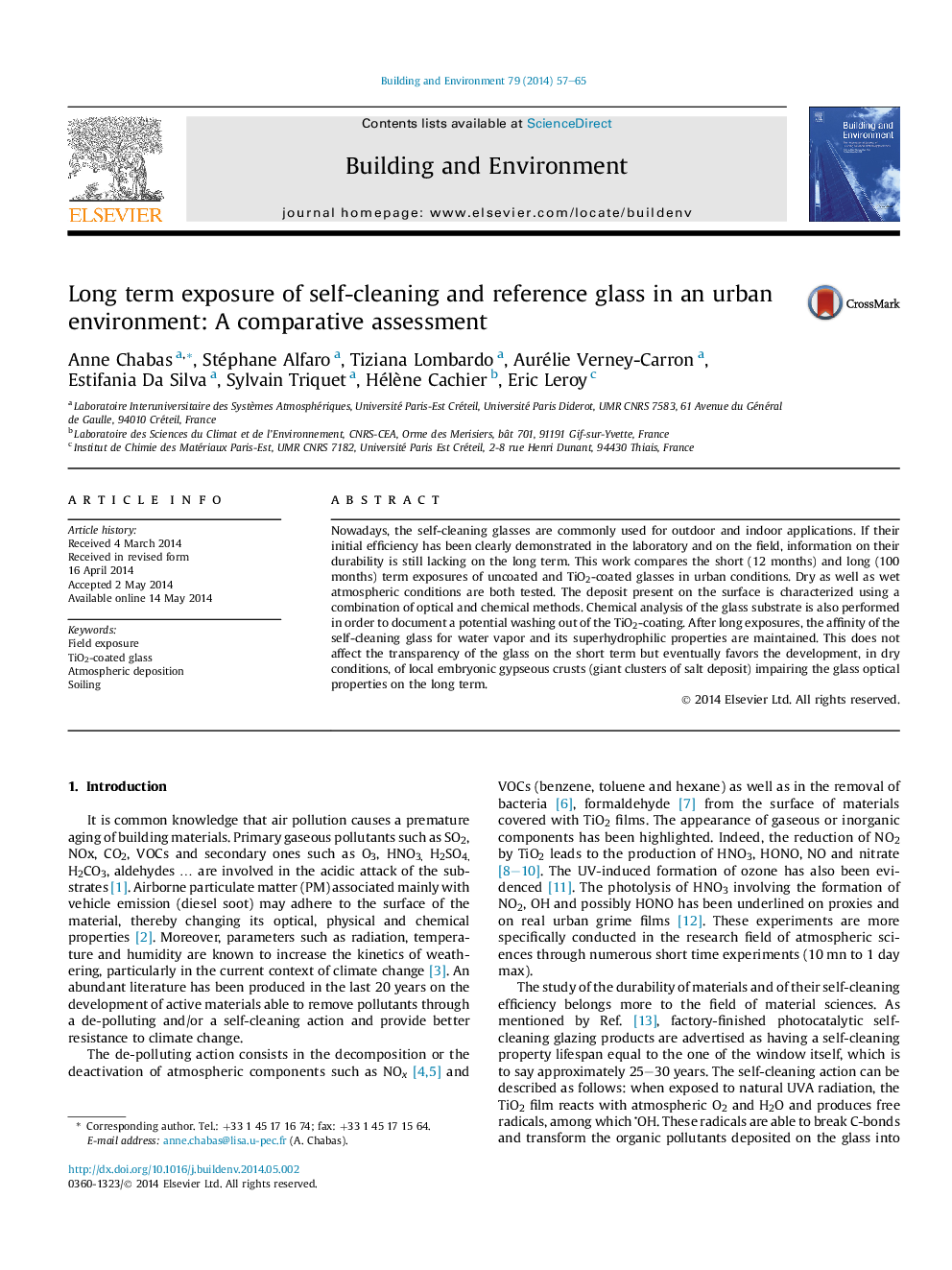| Article ID | Journal | Published Year | Pages | File Type |
|---|---|---|---|---|
| 248101 | Building and Environment | 2014 | 9 Pages |
•Results of 8-years field exposure of self-cleaning glass.•Decline of photocatalytic performance.•Maintenance and negative feedback of superhydrophilic property.
Nowadays, the self-cleaning glasses are commonly used for outdoor and indoor applications. If their initial efficiency has been clearly demonstrated in the laboratory and on the field, information on their durability is still lacking on the long term. This work compares the short (12 months) and long (100 months) term exposures of uncoated and TiO2-coated glasses in urban conditions. Dry as well as wet atmospheric conditions are both tested. The deposit present on the surface is characterized using a combination of optical and chemical methods. Chemical analysis of the glass substrate is also performed in order to document a potential washing out of the TiO2-coating. After long exposures, the affinity of the self-cleaning glass for water vapor and its superhydrophilic properties are maintained. This does not affect the transparency of the glass on the short term but eventually favors the development, in dry conditions, of local embryonic gypseous crusts (giant clusters of salt deposit) impairing the glass optical properties on the long term.
Graphical abstractFigure optionsDownload full-size imageDownload as PowerPoint slide
